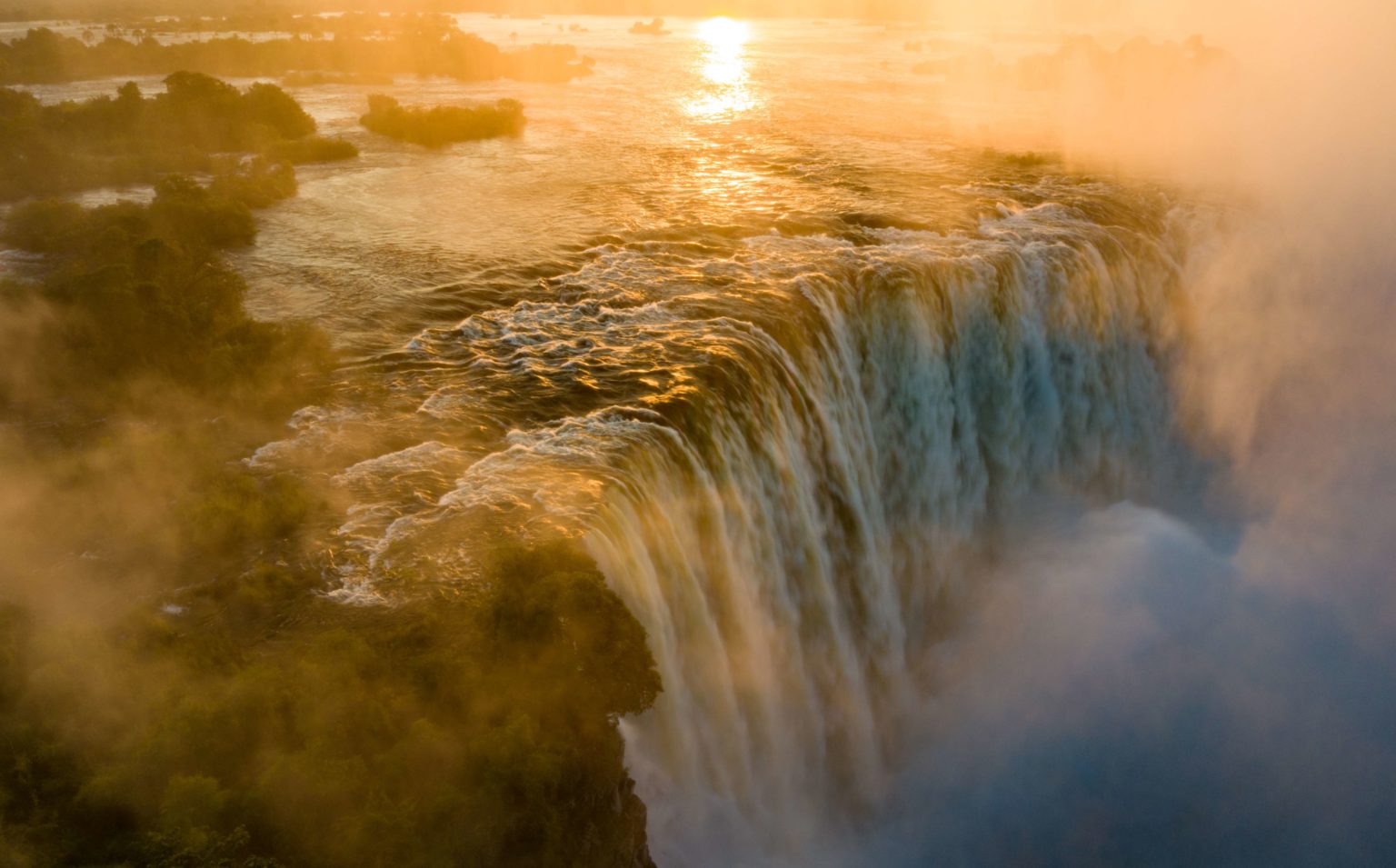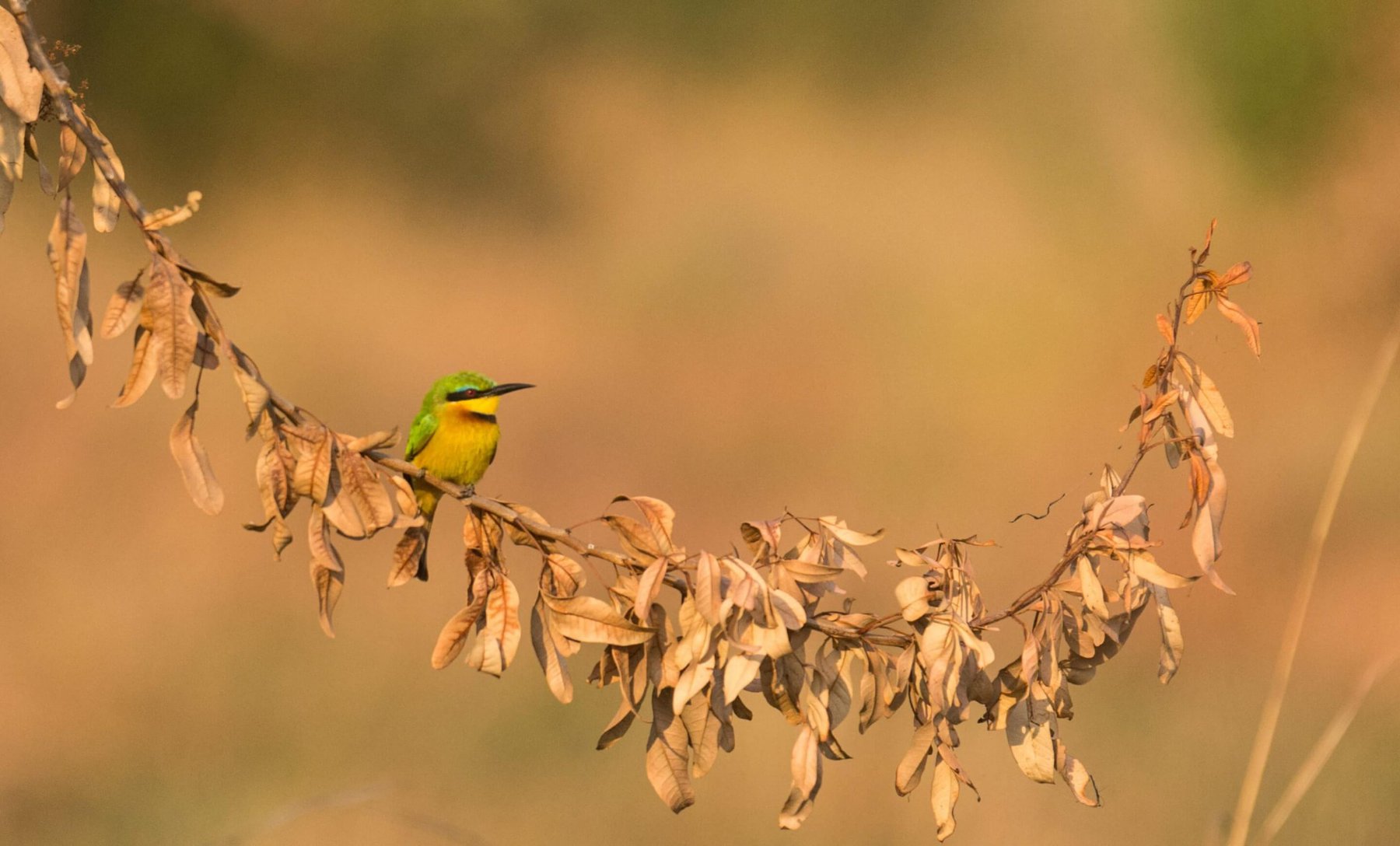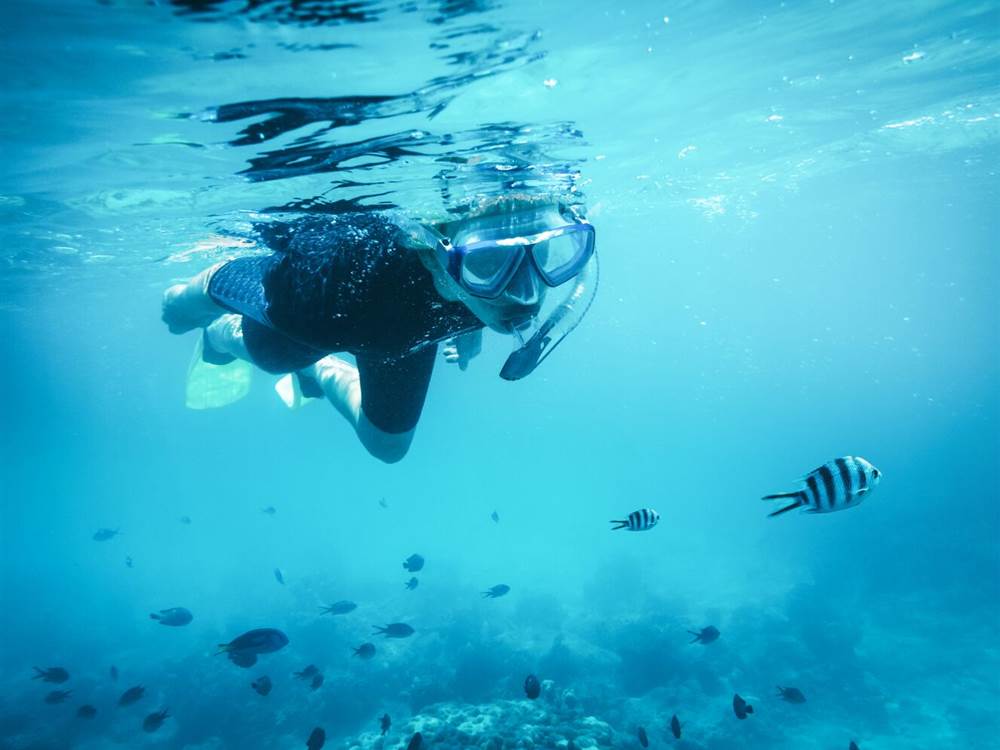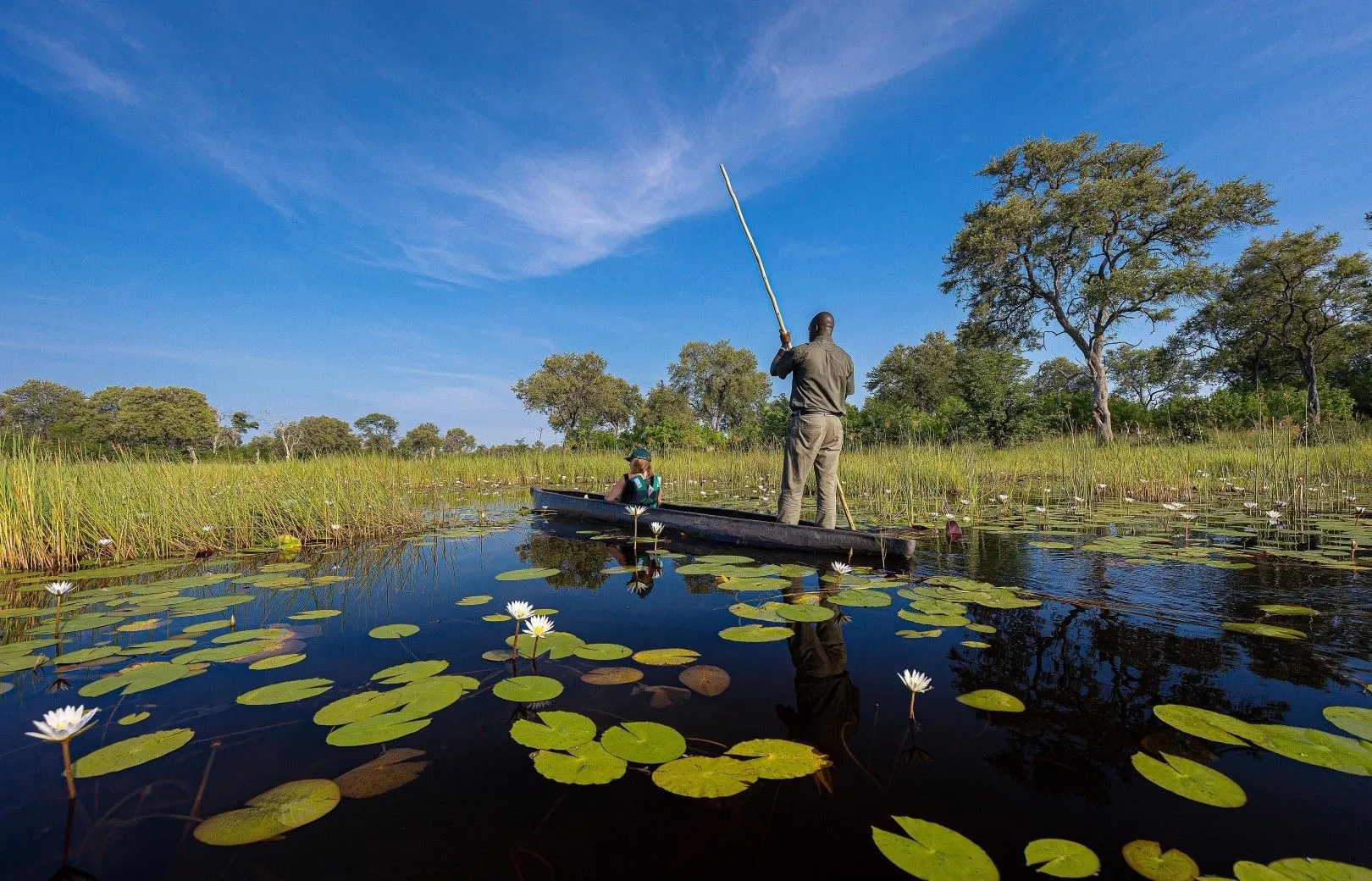Did you know? South Africans can travel visa-free to Botswana, Kenya, Mozambique, Namibia, Tanzania, Zambia, Zimbabwe, and many more fascinating African countries.
Regional travel is often a more convenient option for South Africans, and as many of our African neighbours update their policies, allowing for more seamless cross-border movement.
With the festive season done and dusted, now’s the time to start looking forward to the next celebration and perfect excuse for a getaway: Easter (or a sneaky, crowd-free holiday just before or after). February is a great time to book, allowing you to grab the best rates and secure your spot at the most sought-after lodges.
But where to go? What to do? And where to stay? Read on for Team GILTEDGE’s recommendations, along with our expert tips for making the most of your autumn adventures.
Zimbabwe/Zambia: See Victoria Falls in all her glory
What to expect in March – May: March and April both fall into the high-water season for this Wonder of the World, when it’s at its most spectacular. You’ll definitely get a better, broader view on the Zimbabwean side at this time of year. May is also an excellent time to visit, though be mindful that as the water levels decrease and visibility improves, tourist numbers also tend to increase.
Expert tip: A lesser-known phenomenon at Victoria Falls is the lunar rainbow, or ‘moonbow,’ visible on clear nights during the full moon. This natural marvel, created by the light of the full moon shining through the mist of the falls, is a rare and breathtaking sight. Consider the dates of the full moons when booking if you’d like to see it for yourself: 25 March, 23 April, and 23 May 2024.

Tanzania: Birdwatching near Mount Meru
What to expect in March – May: You’ll arrive just as the rainy season is wrapping up, creating the perfect conditions for birdwatching. Expect to see both resident and migratory birds from Europe and Northern Africa if you choose to visit in March. As May approaches, the weather starts to dry up, making birdwatching conditions more comfortable with less muddy terrain. Keep your eyes peeled for rare species on your birding bucket list, including Narina Trogon, Hartlaub’s Turaco, the Silvery-cheeked Hornbill, and various sunbirds and raptors.
Expert tip: Unlike the typical north-south bird migrations, Mount Meru experiences altitudinal migrations, where birds move up and down the mountain with the seasons. Some species may start descending from higher altitudes during the transition from the wet to dry season, offering unique sighting opportunities at lower levels.

Zanzibar: Diving with marine life
What to expect in March – May: Zanzibar’s rainy season tapers off from the end of March, bringing improved visibility, especially when diving offshore. Plus, the water temperature during this time is warm, ranging from about 27°C to 29°C – so, no need for thick wetsuits. Divers can expect to see many fish species, vibrant coral reefs, moray eels, dolphins, and possibly larger pelagic fish. The end of the rainy season can also bring plankton blooms, which can attract larger marine animals.
Expert tip: The Indian Ocean here experiences considerable tidal variations, impacting visibility and accessibility at certain dive sites. Check the tidal schedule and plan your dives accordingly to take advantage of the best conditions.

Botswana: Enjoy a more tranquil Okavango Delta
What to expect in March – May: March is the tail-end of the Delta’s picture-perfect green season. From April, the Delta’s annual flooding begins, peaking between June and August. By April and May, when tourist numbers are lower, the floodwaters from the Angolan highlands begin to spread across the waterways, transforming the landscape and making it possible to explore the region on board a mokoro (a traditional dugout canoe). As the floodwaters rise, wildlife starts to concentrate on higher ground, making it easier to spot animals. The end of the rainy season also means an abundance of food and nesting activity, providing great opportunities to see resident and migratory birds.
Expert tip: The Okavango Delta’s floodwaters take several months to travel downwards, and certain areas receive water earlier than others, affecting animal movements and accessibility. Knowing the flood pattern can help you choose the best locations for wildlife viewing if visiting earlier in autumn.

Namibia: Sandboarding in Swakopmund
What to expect in March – May: This time of year is generally mild and pleasant in the seaside town of Swakopmund. March still falls within the summer season, so you can expect warmer temperatures, while April and May see a transition into cooler autumn weather. The cooler days in April and May make sandboarding and quad biking more comfortable compared to the hotter months. The dunes remain dry, providing perfect conditions for both lie-down and stand-up boarding.
Expert tip: Unlike snowboarding, sandboarding typically involves walking back up the dune after each run. It’s physically demanding, so a bit of pre-trip fitness preparation, especially cardio and leg exercises, can make the entire experience more enjoyable (and ensure you’ll enjoy the thrill more than just once or twice!).

Ready for a regional break this autumn? Make your travels stress-free and seamless with GILTEDGE’s guidance. Contact us today to start planning.
